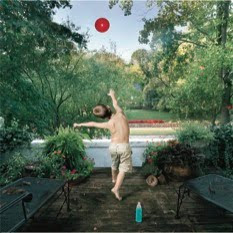>
Amanda is an artist who teaches at a pre-school in Cambridge. She gets dumped by her fiancé shortly before the wedding. She understands that she loved him but he, obviously, didn’t love her. She is let go by the school—her grief over the engagement spills into her work—and gets a summer job taking care of one of the students. In the boy’s father’s home she finds a copy of Dante’s La Vita Nuova, in which she learns that a man in love should weep. She remembers that her fiancé said she made him laugh, but “Love weeps,” Dante wrote.
At the end of the summer, she’s rediscovered her art. She learns that her charge’s father wants her to sleep with him, but it’s only the little boy who weeps. And she understands, apparently, that his love is real.
I like it. Amanda seems very real. Her reaction to the broken engagement seems real. The fun things she does with the little boy seem real. The way memories of her fiancé keep popping into her head seems real. And over the course of the story, she gets over him.
It doesn’t strike me as a terribly deep story, but it’s nice. I liked it.
May 3, 2010: “La Vita Nuova” by Allegra Goodman


>I'd like to suggest an edit. Take this quote:
"She painted her fiancé as a boy, as an athlete, as a law student, as a paunchy bald guy, as a decrepit old man. She didn’t kill him, but she aged him. "
Surely, the last sentence, "She didn't kill …" is completely obvious and should be omitted?
On the positive side, I love the astute observation of gender differences in the way the parents react to Amanda's gift. The father focuses on Amanda's talent, the mother on the "gorgeous" gift. The emotional woman and the judgmental man, which actually chimes with reality, in my opinion.
Paul Epstein
>I agree with you Paul!